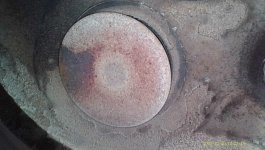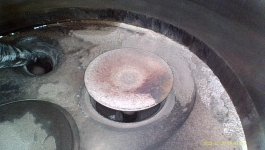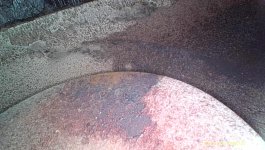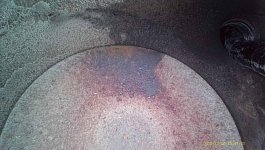sbalmos
Well Known Member
Having gone to enough of Mike Busch's talks at Oshkosh over the years, I finally invested in a better borescope this past season, one that articulates. This was the first time I've been able to see the exhaust valves. My #3 exhaust is apparently sticking. Since this is the first time seeing the valves, I don't know to what extent this has progressed over the 4 years and 220 hours of time I have on the plane and engine.
There's isn't any telltale green (yet), and all other metrics of the engine show it to be very healthy. I /really/ would rather not have to pull the jug. If it's something I can just keep in the back of my mind, monitor, and see if/how bad it progresses next winter at the next annual, even better. But clearly the burn pattern shows the valve is sticking. I tried to take some pictures around the valve seat. But the hotspot is in the one area of the valve seat that I can't really get the borescope camera around to. Regardless, I'm not seeing anything sticking out (pun intended).
I run EFII, definitely lean, and my CHTs usually stay in the mid 360s to 370s in cruise, so most of the too-lean/too-rich/too-cold/too-hot ideas I wouldn't think would apply at first blush.
Thoughts, comments, ? It's surprising me that it's showing up after only 220 hours.
There's isn't any telltale green (yet), and all other metrics of the engine show it to be very healthy. I /really/ would rather not have to pull the jug. If it's something I can just keep in the back of my mind, monitor, and see if/how bad it progresses next winter at the next annual, even better. But clearly the burn pattern shows the valve is sticking. I tried to take some pictures around the valve seat. But the hotspot is in the one area of the valve seat that I can't really get the borescope camera around to. Regardless, I'm not seeing anything sticking out (pun intended).
I run EFII, definitely lean, and my CHTs usually stay in the mid 360s to 370s in cruise, so most of the too-lean/too-rich/too-cold/too-hot ideas I wouldn't think would apply at first blush.
Thoughts, comments, ? It's surprising me that it's showing up after only 220 hours.








